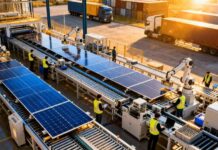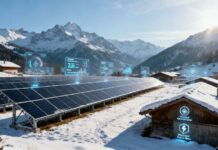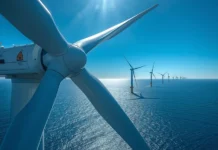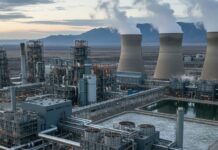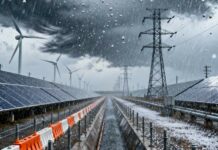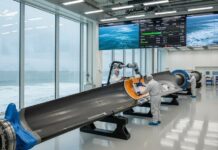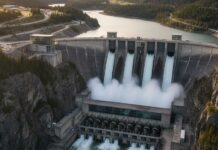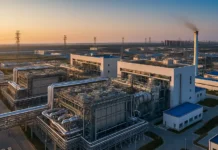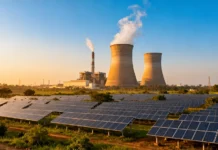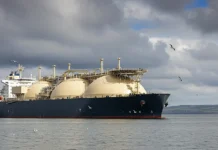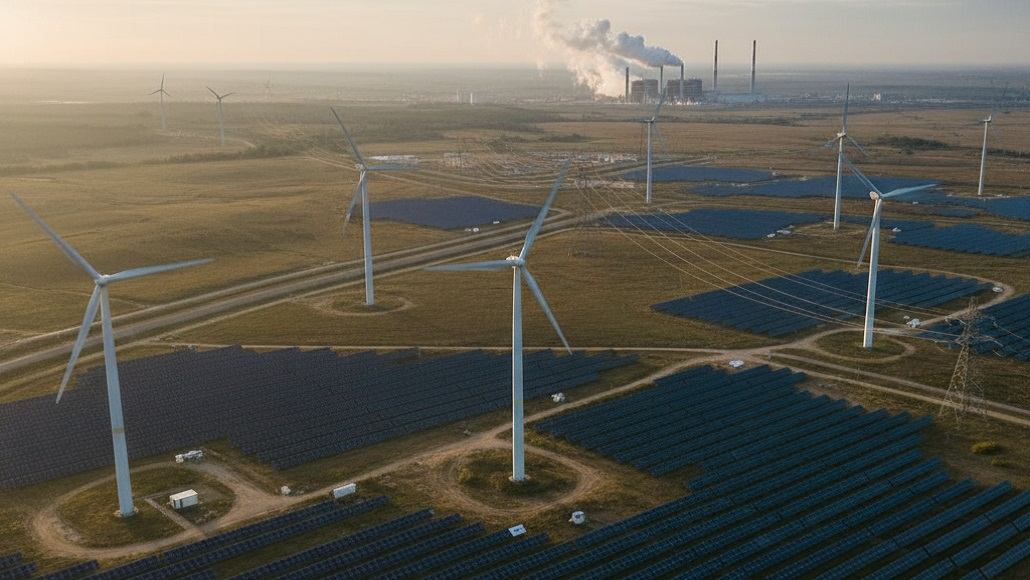Hybrid Energy Systems: Merging Solar, Wind, and Gas for Reliable Power
The global energy landscape is undergoing a fundamental transformation as renewable energy sources increasingly displace fossil fuel generation. However, the inherent variability of solar and wind resources presents formidable challenges for grid operators and industrial consumers demanding reliable, continuous power supply. Hybrid energy systems that strategically combine complementary generation sources, including solar photovoltaics, wind turbines, and natural gas, offer compelling solutions that maximize renewable integration while maintaining the stability and dispatchability that modern energy systems require.
Understanding Hybrid Power System Architecture
A hybrid energy system integrates two or more power generation methods, typically from renewable sources supplemented by conventional backup or energy storage technologies. These configurations leverage the complementary nature of different energy resources to provide more consistent output than any single source could deliver in isolation. Solar energy peaks during daylight hours, particularly in sunny conditions, while wind energy often intensifies during evening hours or weather systems that coincide with reduced solar availability.
The fundamental components of solar-wind hybrid systems include photovoltaic panels that convert sunlight directly into electricity, mounted at optimal angles to maximize exposure throughout different seasons. Wind turbines, both horizontal-axis and vertical-axis designs, harness kinetic energy from wind and convert it into electrical power through generators housed within the turbine structure. Energy storage systems, typically battery arrays, store excess generation during peak production periods for discharge when renewable output diminishes.
Hybrid charge controllers manage power flows from multiple sources, ensuring voltage stability while protecting battery systems and prolonging operational lifespans. Energy management systems coordinate solar panels, wind turbines, storage, and backup generation, optimizing operations based on real-time generation data, consumption patterns, and price signals. Inverters convert direct current from solar panels and batteries to alternating current compatible with grid infrastructure and industrial equipment.
The Renewable Complementarity Advantage
The synergistic relationship between solar and wind generation forms the foundation of hybrid system benefits. Research demonstrates that combining complementary sources achieves more stable and predictable energy output, reducing power shortage risks during periods of low sun or wind availability. This complementarity proves particularly valuable in regions experiencing seasonal variations in renewable generation, where hybrid configurations provide more consistent annual energy supply to meet continuous demand.
India’s diverse climate mandates thoughtful planning to optimize solar and wind technology integration, with engineers using advanced tools to design systems tailored to specific regional characteristics. The National Wind-Solar Hybrid Policy has facilitated establishment of significant hybrid capacity, resulting in substantial renewable generation capability. Financial Year 2023 saw approximately 12,784 megawatts of solar capacity and 2,276 megawatts of wind capacity added across India.
Hybrid systems enhance overall efficiency by enabling energy storage during excess production periods for utilization when generation is insufficient, increasing system efficiency while reducing waste. Some regions install hybrid systems because solar or wind alone cannot meet baseload requirements, but combined they provide sufficient and stable electricity. The complementary generation patterns mean that when solar panels produce excess power during bright sunshine, batteries store energy for use during calm winds or cloudy conditions, while wind turbines provide power during stormy periods or nighttime hours when solar generation ceases.
Industrial Applications and Benefits
Industrial operations leverage hybrid energy systems to address multiple operational and financial objectives. Cost reduction represents a primary driver, as industrial plants in regions with high electricity rates achieve substantial savings by reducing grid dependency. Installation of hybrid systems enables facilities to switch to battery storage when grid electricity becomes unavailable, making power outages virtually negligible. For industries operating continuously, return on investment accelerates through maximized utilization of generation and storage assets.
Electricity independence appeals to facilities facing grid reliability challenges or seeking greater control over energy supply. The complementary nature of solar and wind generation enables more efficient infrastructure utilization, reducing reliance on grid connections that may be constrained or unreliable. Battery storage integration ensures continuous power supply even when renewable generation from both sources is temporarily insufficient.
Reduced carbon footprint and environmental impact align with corporate sustainability commitments and regulatory requirements. By displacing fossil fuel consumption, hybrid systems lower emissions while demonstrating environmental leadership that enhances brand reputation and market positioning. Manufacturing facilities, data centers, and processing plants implement hybrid solutions to meet increasingly stringent sustainability targets while maintaining operational performance.
Enhanced resilience protects against both short-term outages and extended grid disruptions that could halt production or damage sensitive equipment. Unlike diesel generators requiring fuel deliveries that may be interrupted during emergencies, hybrid systems with adequate storage provide self-sufficient operation for extended periods.
Gas Integration for Baseload Reliability
While solar-wind combinations deliver significant benefits, incorporating natural gas generation creates hybrid configurations capable of true baseload reliability comparable to conventional power plants. Gas turbines provide rapid startup capabilities, scalable output, and fuel flexibility that complement renewable intermittency. During extended periods of low wind and solar generation, gas units dispatch quickly to maintain stable power supply without the long startup times associated with coal plants.
This integration proves particularly valuable for industrial applications where power reliability is non-negotiable. Chemical processing, semiconductor manufacturing, and continuous production operations cannot tolerate the supply interruptions that purely renewable systems might experience during unfavorable weather condition. Gas backup ensures these facilities maintain operations while maximizing renewable utilization during favorable generation periods.
The transition pathway from fossil fuels to predominantly renewable systems benefits from gas as a bridge fuel. Natural gas emits approximately half the carbon dioxide of coal for equivalent energy output, making gas-hybrid systems a pragmatic intermediate step toward fully decarbonized operations. As renewable generation capacity, storage technologies, and grid infrastructure mature, gas utilization can gradually decrease while maintaining system reliability throughout the transition.
Grid Stability and Ancillary Services
Hybrid power plants enhance grid stability through multiple mechanisms. By smoothing renewable output variability through storage integration, hybrid facilities reduce the rapid fluctuations that challenge grid operators. Battery systems respond within milliseconds to frequency deviations, providing essential regulation services that maintain grid synchronization. This rapid response capability proves increasingly valuable as grids accommodate higher renewable penetration that inherently introduces greater variability.
Hybrid installations participate in ancillary service markets, generating revenue streams that improve project economics while supporting grid operations. Frequency regulation compensates facilities for rapid power adjustments that balance supply and demand fluctuations. Voltage support maintains power quality across transmission and distribution networks. Operating reserves ensure capacity availability for deployment during unexpected generation shortfalls or demand surges.
Energy arbitrage opportunities arise from storage capabilities, allowing facilities to charge batteries when wholesale electricity prices are low and discharge during expensive peak periods. This optimization reduces energy procurement costs while contributing to overall grid efficiency by shifting demand away from constrained periods.
Control Systems and Optimization
Intelligent control systems distinguish modern hybrid installations from simple generation aggregations. Energy management systems oversee and coordinate solar panels, wind turbines, storage, and backup generation, ensuring maximum efficiency and productivity. These systems manage energy production based on real-time data, adjusting operational parameters to match demand patterns and storage capabilities.
Smart grid technologies enable bidirectional communication between energy producers and consumers, allowing dynamic adjustments in energy distribution, load balancing, and responsiveness to renewable availability changes. Advanced forecasting tools predict generation patterns using weather data, historical performance, and machine learning algorithms, enabling proactive operational decisions that optimize system performance.
Predictive maintenance capabilities analyze equipment performance data to identify potential failures before they occur, scheduling interventions during optimal windows that minimize production impacts and maintenance costs. This proactive approach extends equipment lifespans while reducing unexpected downtime that could compromise facility operations or grid commitments.
Economic Considerations and Market Dynamics
Hybrid energy system economics reflect complex interactions between capital costs, operational savings, incentive programs, and revenue opportunities. Installed costs vary based on generation capacity, storage duration, system complexity, and geographic factors. Economies of scale favor larger installations where per-unit costs decline as capacity increases.
Policy and regulatory frameworks significantly influence hybrid project viability. Many jurisdictions now incentivize storage integration, and in some markets hybrid configurations represent the only pathway for new renewable projects to secure interconnection rights. Government support through tax credits, accelerated depreciation, or direct subsidies improves financial returns while advancing policy objectives for renewable deployment and emissions reduction.
Long-term electricity price trends generally favor hybrid installations as renewable technology costs continue declining while fossil fuel prices remain volatile. The International Energy Agency reports that battery storage costs have fallen 93 percent since 2010, supported by manufacturing capacity expansion primarily in China. Solar photovoltaic generation costs decreased 68 percent between 2015 and 2023, with wind technology experiencing similar reductions. These trends improve hybrid system competitiveness while expanding addressable markets.
Avoided fuel costs represent substantial operational savings for industrial facilities replacing diesel generator reliance with hybrid systems. Eliminating fuel purchases, transportation, storage, and associated administrative overhead yields immediate cost reductions that improve project returns. Reduced maintenance requirements for renewable generation equipment compared to combustion engines further enhance lifecycle economics.
Challenges and Implementation Considerations
Despite compelling advantages, hybrid energy systems face implementation challenges requiring careful planning and expert execution. Fragmented monitoring systems where wind, solar, and storage operate on separate platforms complicate operational oversight and increase management complexity. Integrated monitoring solutions consolidating data streams into unified interfaces address this challenge while reducing training requirements and operational errors.
Complex alarm management burdens operators as hybrid systems generate thousands of alerts from multiple subsystems including inverter faults, battery temperature warnings, and wind turbine performance deviations. Intelligent alarm clustering and prioritization help operators focus on critical issues while filtering routine notifications that do not require immediate intervention.
Time-consuming reporting processes to regulators, investors, and internal stakeholders become particularly challenging when data resides across different systems. Manual consolidation increases error risk and delays while consuming valuable staff time that could otherwise address operational priorities. Automated reporting tools that extract and synthesize data from multiple sources streamline compliance while improving accuracy.
Performance optimization ensuring not just individual components but entire hybrid systems operate at peak efficiency requires advanced analytics, sophisticated controls, and integrated performance monitoring. Achieving this optimization demands expertise spanning multiple technologies, grid operations, energy markets, and control systems engineering.
Site selection considerations include renewable resource availability, land use constraints, grid interconnection capacity, and environmental factors. Comprehensive resource assessments characterizing solar irradiance, wind patterns, and seasonal variations guide optimal technology selection and sizing. Regulatory requirements, permitting processes, and community engagement add complexity and timeline uncertainty that must be managed throughout project development.
The Future of Hybrid Power
Hybrid energy systems represent the practical pathway for achieving high renewable penetration while maintaining grid reliability and industrial power quality. As storage costs continue declining, control systems become more sophisticated, and market structures evolve to value flexibility and stability services, hybrid configurations will increasingly dominate new generation capacity additions.
The integration of hydrogen production using excess renewable generation offers additional optimization opportunities. When solar and wind output exceeds immediate demand or storage capacity, electrolyzers can produce green hydrogen for industrial feedstock applications, transportation fuel, or long-duration energy storage. This power-to-X approach maximizes renewable asset utilization while creating value from generation that might otherwise be curtailed.
Artificial intelligence and machine learning will enhance hybrid system performance through improved forecasting accuracy, predictive maintenance capabilities, and real-time optimization across increasingly complex operational constraints. Digital twin technology enabling virtual testing of operational strategies before physical implementation will reduce risks while accelerating performance improvements.
The evolution toward hybrid energy systems reflects growing recognition that achieving decarbonization and energy security objectives requires pragmatic integration of complementary technologies rather than wholesale replacement of existing infrastructure. By strategically combining solar, wind, storage, and transitional gas generation, hybrid power plants deliver the reliability, flexibility, and sustainability that define successful energy transitions worldwide.




